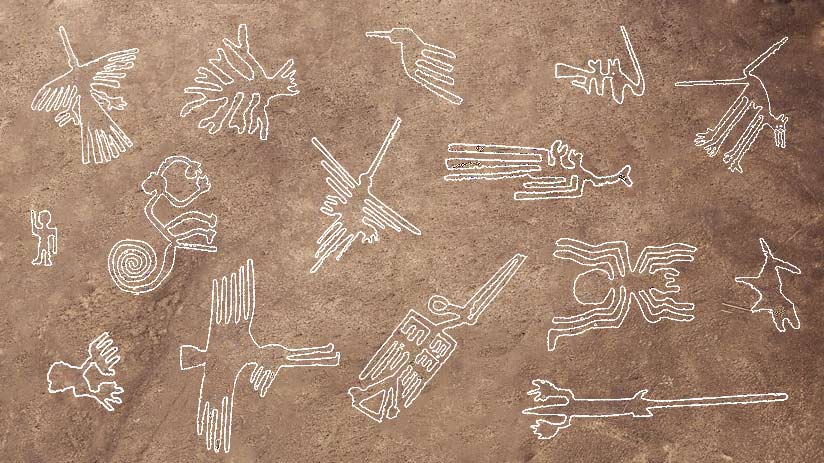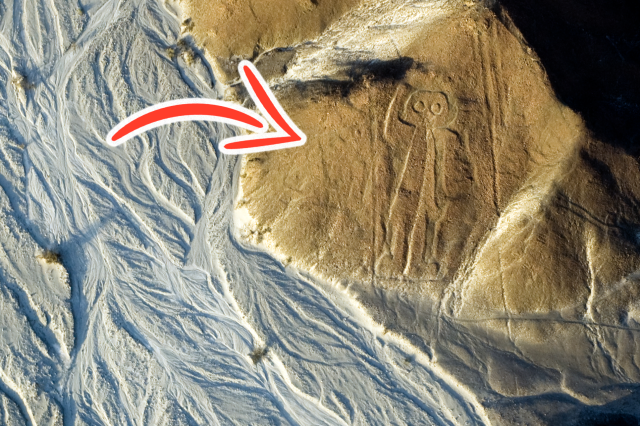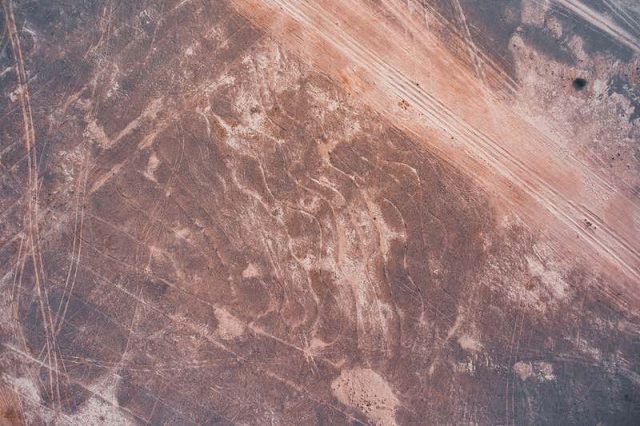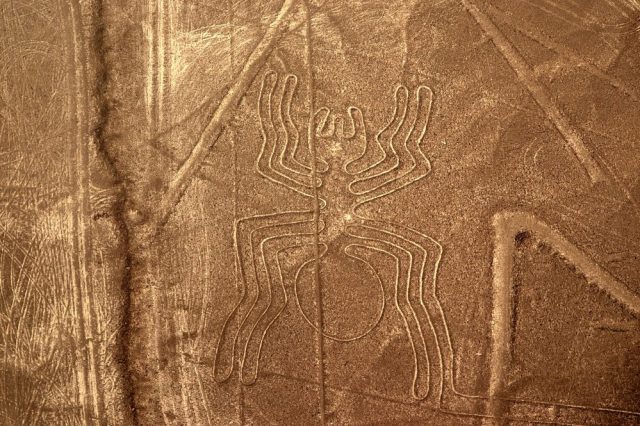Despite the number of theories and interpretations, the Nazca Geoglyphs remain an absolute mystery that gives us that positive boost of imagination to keep exploring.
Why do humans deify objects, individuals, or nonexistent subjects of their imagination? Why did ancient cultures create and build impossible structures to commemorate such entities? From the largest ancient monuments to the enigmatic Nazca geoglyphs that are visible only from the sky, here are my interpretations of the mysteries that caused ancient humans to create such wonders in the name of higher powers.
Here we go…
I believe that mankind will never come to terms with its loneliness. The collective phobia that the cosmos is uninhabitable seems no less frightening to linear human thinking than the unknown fate of one’s own self after the biological end of individual existence. Ever since the twilight of his consciousness, man has been mentally crushed by the weight of the emptiness in which he is destined to live.
The only way to survive and fulfill his purpose is to give free rein to his most divine gift, the imagination, and to populate the deadly vacuum around him with inhabitants for courage and company on the uncertain path ahead. During the various epochs, these companions in life were inevitably changed by virtue of evolving human imagination, from amorphous spirits and metaphysical forces to rational deities and supercivilized beings.
The reality of this parallel world has always been disputed, but the imaginary coziness that consciousness provides in various ways to alleviate the convulsions of the soul has never become a heresy worthy of the stake. The main thing is for man to find relief from the fear of being alone in the universe.
Although it is insignificant as a moral challenge, humanity has not for a moment in its path dreamed of irrefutable proof that this is not the case. Especially in modern times with the rise of materialism and the demise of the gods, when flying saucers and alien civilizations obsessed the human imagination. And the content necessary for the new planetary mythology naturally begins to be sought here on Earth.
Ancient civilizations have left enough mysterious monuments, whose origin and purpose can be equally convincingly interpreted in different ways. The list is long – starting from the Egyptian pyramids and ending with Machu Picchu. But in its “alienness”, what the pre-Columbian Peruvian culture Nazca bequeathed to us is equivalent to the philosopher’s stone for alchemists.
The Nazca Culture & The Nazca Geoglyphs
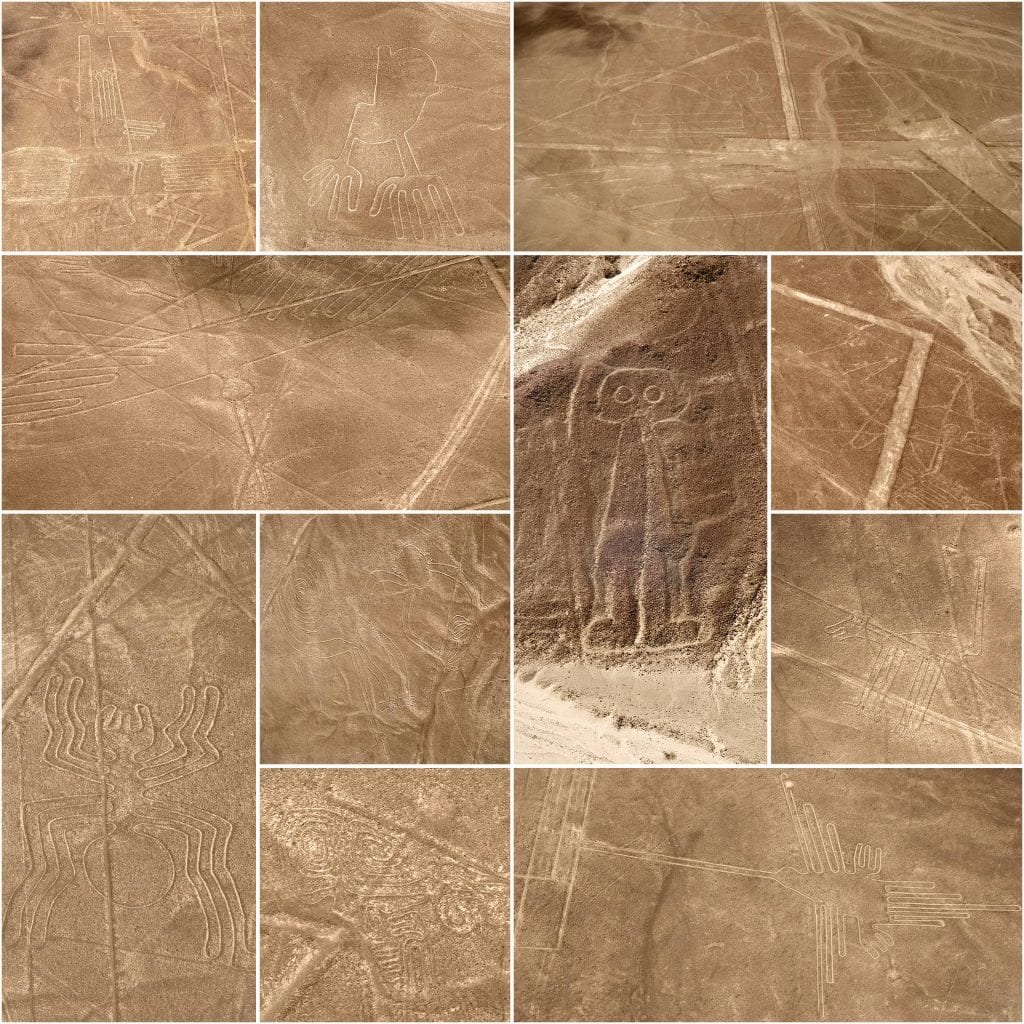
From whichever direction you arrive by land in the small Nazca oasis, nothing can tell you that right here, the desert is something other than the thousands of miles of hopelessness that surrounds the Pacific coast of the entire southern half of Peru. But if you fly in, as the American anthropologist Paul Kosak first did in 1939, your vision will go crazy in a futile quest to capture the vast canvas of unseen images that have appeared beneath you as if in a magical way.
In this desert area, now called the Pampa Colorado (Red Plateau), located not far from the western foothills of the Andes and only fifty kilometers from the Pacific coast, nearly 3,000 years ago settled a people who fed on agriculture, created an original system for irrigation with a minimum amount of water, grinding beautiful ceramics and dressing in stylish fabrics.
The Nazca culture reached its apogee between the second century BC and the sixth century of the new chronology. During this time, these ancient people created the largest works of art on the planet.
On an area of about a thousand square kilometers in the ground of the desert, we now see their ancient geoglyphs, composed of geometric elements and figures in a collage with stylized images of people, animals, plants, and geometrical figures.
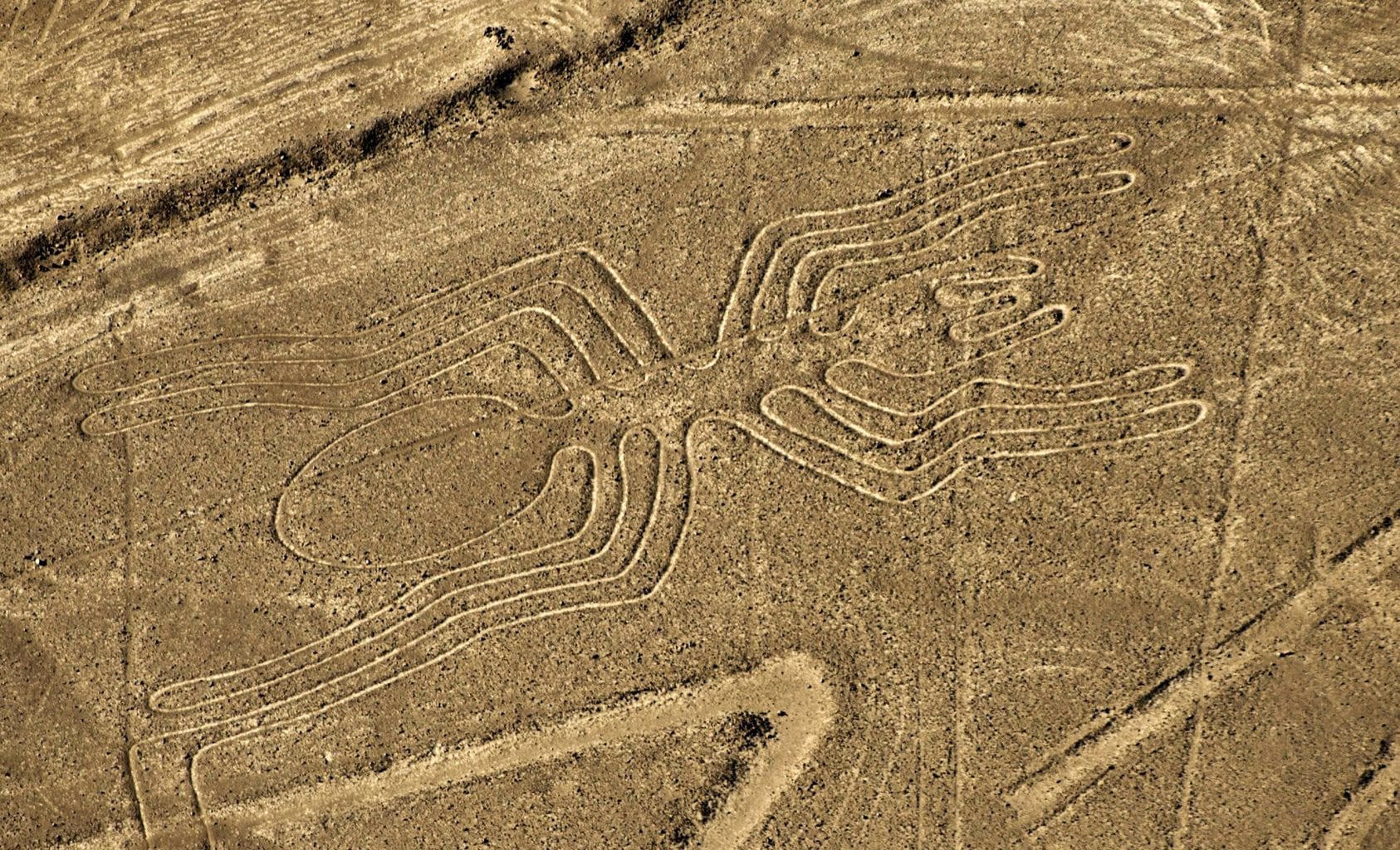
Among the Nazca geoglyphs, some intricate compositions of a monkey with an extravagantly twisted tail, a hundred and eighty meters long lizard, a condor with a wingspan of one hundred and thirty meters, a spider, a dolphin, a hummingbird, and a strange humanoid with a head like a spherical aquarium for fish, whom tourist guides call the “Astronaut”.
All Nazca geoglyphs are made in the same, extremely simple way – methodically removing the top layer of the stone surface to the side to show the lighter, whitish layer below and thus obtain a contrasting touch. The formed shallow furrows are no more than 20-25 cm deep, less than a meter wide, and their total length amounts to hundreds of kilometers.
As titanic as it is in this case, man’s primordial urge to leave a trail behind him in spite of everything, in spite of his mortality and the absolute transience of the world he invented, Nazca would hardly have captured the curiosity of modern generations if it had not been distinguished with one essential detail.
Unlike pyramids, temples, skyscrapers, and other human attempts to overcome the gravity of the enchanted cycle of life and death, Nazca’s creation were invisible to its creators and their descendants. Why have these people worked hard for hundreds of years to do something that can only be truly seen and appreciated from heaven?
Interpreting the purpose of the Nazca Geoglyphs
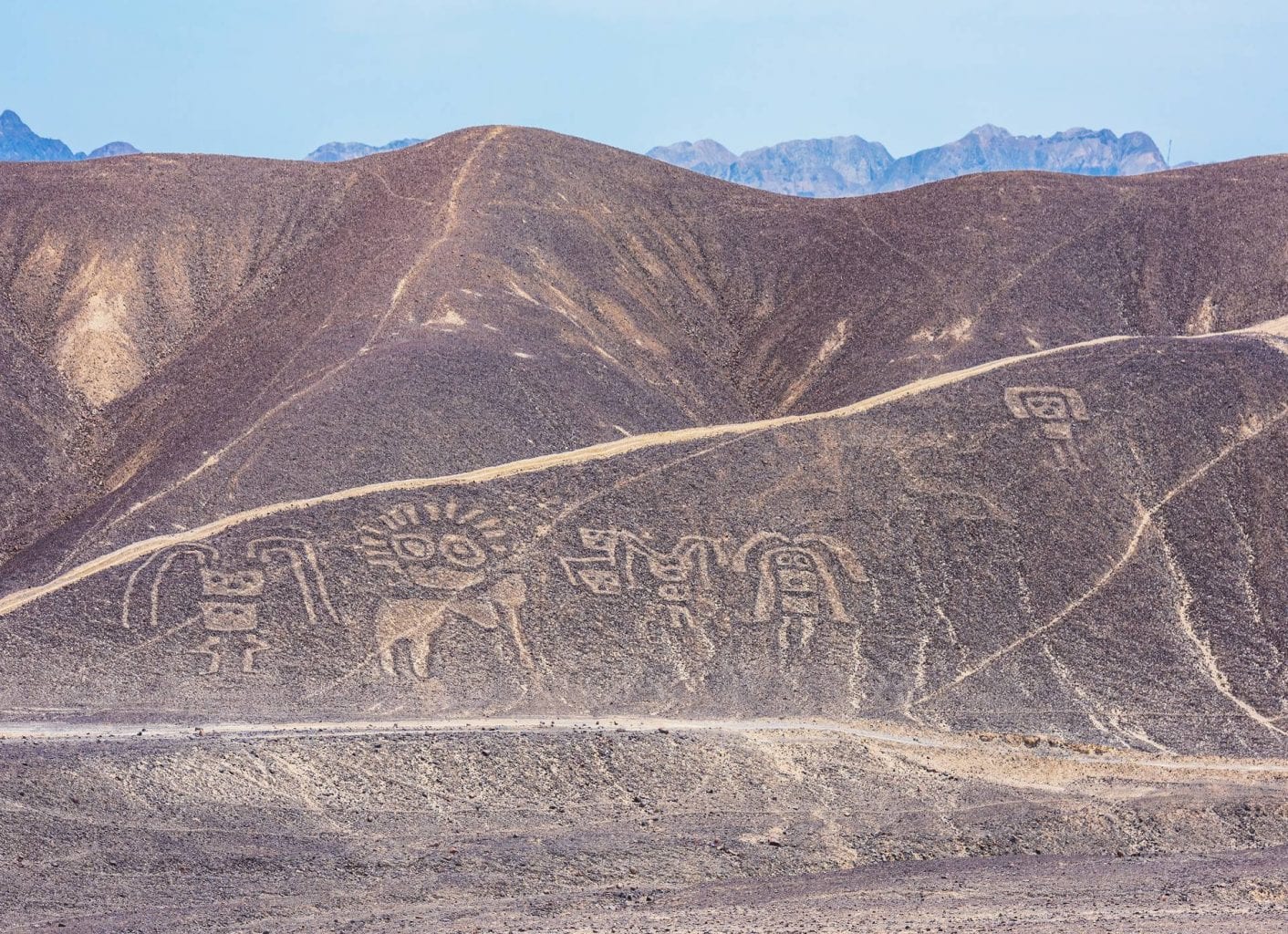
The purpose of the geometric symbols and outlines in Nazca remains a mystery to this day. However, hypotheses have no end. Of course, the most famous among the general public is the statement of the unorthodox Swiss researcher Erich von Daniken that spaceships from extraterrestrial civilizations landed in Pampa Colorado, Peru. According to him, the people of the Nazca culture witnessed this event, and before the departure of the aliens, decided to create a kind of landmark for future stellar visits.
How else could the creators of the mysterious Nazca geoglyphs carry out their project if they did not have an aerial perspective? The archaeologist with a mathematical education Maria Reiche is the fiercest opponent of Daniken and his alien theory of Nazca.
She spent her entire adult life among the glowing stones of the Pampa Colorado, looking for an answer to the mystery. Her analyzes show that Nazca and the Nazca geoglyphs actually are a giant astronomical observatory, with straight and other geometric elements indicating the directions of various solar, lunar, and planetary phenomena.
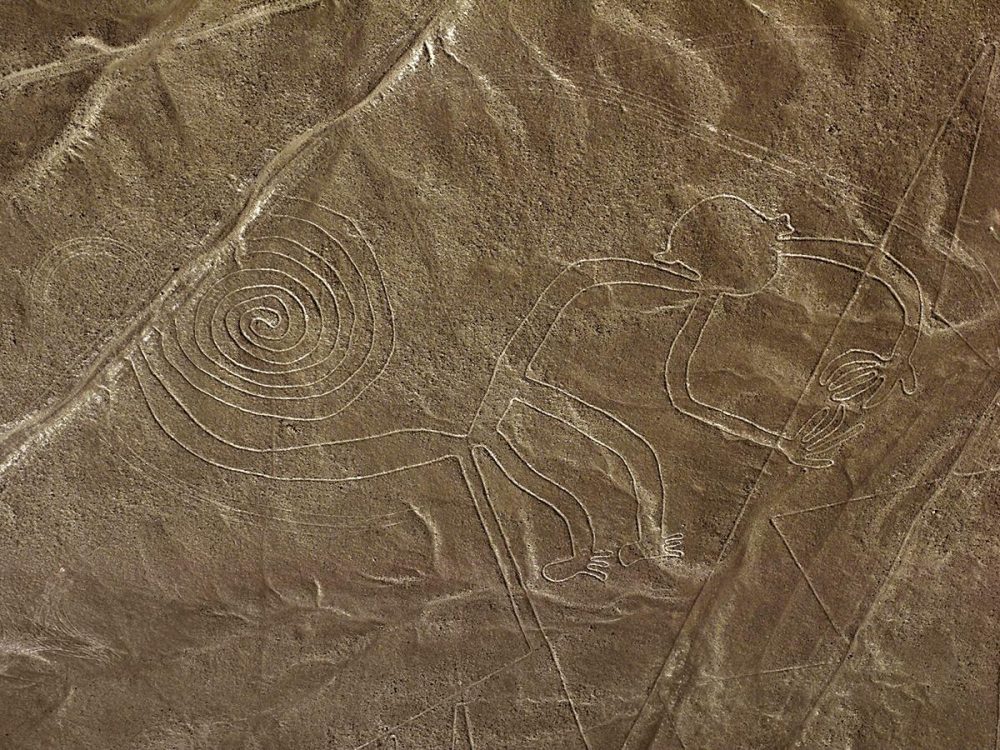
Zoomorphic figures, on the other hand, depicted the shape of certain constellations. For example, the spider is Orion and the monkey is the Big Dipper.
Intrigued by Reiche’s theory, in the 1970s, a team of American astronomers entered data from 186 lines into a computer and obtained the disappointing result that only 20 percent of them had a confirmed astronomical orientation. Statistically, this is too small not to be taken for granted.
The slender, mathematically based theory of the German archaeologist, who died at the age of 95 in Nazca, was sent to the archives, but Erich von Daniken’s extraterrestrial connection lives on today, constantly gaining new supporters.
New Hypotheses

At the same time, the number of new hypotheses is not decreasing. Gilbert de Jong considered Nazca’s geometry in an astrological context and theorized that it was an ancient zodiac. Australian Robert Bast sees the Nazca geoglyphs as a memorial complex created to commemorate the flood that hit the area.
Professor Anthony Aveni thinks in the opposite direction and believes that due to the chronic shortage of water in their lands, the Nazca people have worshiped water and the deities associated with it, building a complex altar for their worship. Another theory, Siegfried Waxmann defines the monument as a cultural atlas of the local civilization.
Professor Federico Kaufmann-Doig assumes that these are magical lines and signs designed by shamans and fortune tellers for their occult activities. The swarm of speculation doesn’t end there and there are literally dozens of absurd theories and interpretations of the Nazca geoglyphs, but where is the truth?
Personally, I quite like the modern theory of the anthropologist Johann Reinhard, who believes that this diverse geometric and abstract design is a means of one-way communication. Its main purpose is to make a visual connection of the creators of the Nazca culture with their gods, who watch them from heaven.
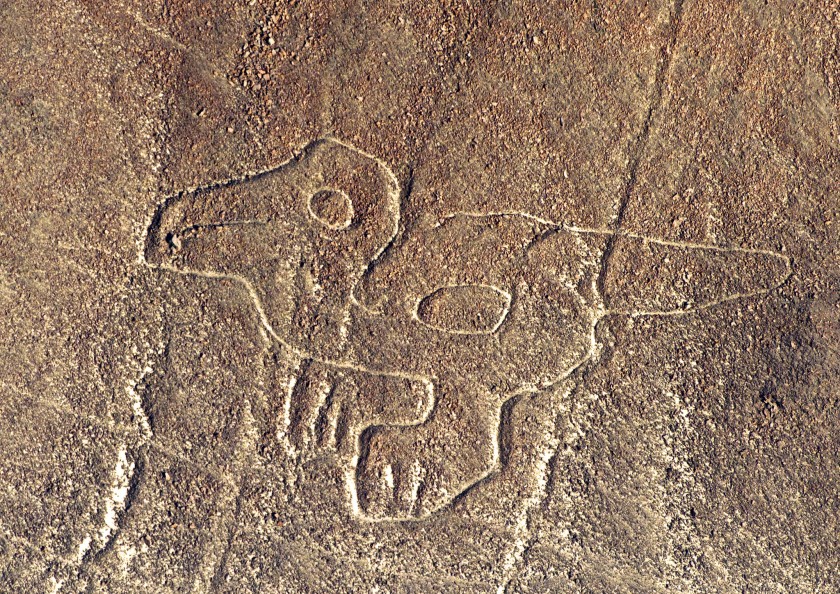
Through practical experiments, it has been found that it was quite possible for the ancient inhabitants to carry out their massive ground-level project without necessarily needing an aerial perspective. And as for the fact that they themselves and those who come after them will not be able to visually contemplate what they have created (from the neighboring hills the figures can be seen, but at a very sharp angle), this small detail hardly bothered them much.
The important thing was that the images differed from above, that they were perfectly visible to the eyes in the sky to which their message was addressed. No other rites or prayers for water and harvest performed by the people of Nazca could be as eloquent for the forces above as these mighty signs.
In the end
There is no doubt that all of us would desperately want the statements of Erich von Daniken and his associates to one day to prove to be irrefutably true. Then the mercury will turn to gold and the magic that weighs on humanity, abandoned in the black cosmos will finally break down. At the speed of a flying saucer, the good news will reach the most remote depths of the Earth. After all, man will not be alone in the universe!
But before that becomes an indisputable fact, skeptics like me will have to either settle for one of the more extraterrestrial theories about the purpose of Nazca’s geoglyphs or simply admire their aesthetic beauty – without asking unnecessary questions.
Join the discussion and participate in awesome giveaways in our mobile Telegram group. Join Curiosmos on Telegram Today. t.me/Curiosmos

